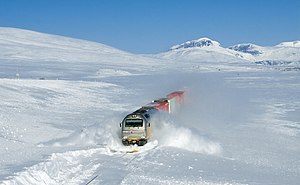**Snow Formation and Characteristics:**
– Snowfall occurs at all elevations and develops in clouds within weather systems.
– Snow crystal shapes vary based on moisture content and temperatures.
– Snow can form under clear skies with cold temperature inversions.
– Major sources of snow include lake-effect storms and elevation effects.
– Snow clouds form in larger weather systems like low-pressure areas.
– Mid-latitude cyclones and frontal snowsqualls can produce various levels of snowfall.
– Lake-effect snow is produced when cold air passes over warmer lake water.
– Snowflakes consist of water molecules added to a core at different rates, forming various shapes.
– Lake-effect snow is enhanced by orographic influence, occurring when moist air is forced up mountain ranges.
– Orographic snowfall occurs when moist air is forced up mountain ranges.
**Physical Properties and Impacts of Snow:**
– Snow density ranges from 0.1 to 0.8 g/cm and has specific tensile and compressive strengths.
– Melting temperature of snow is 0°C with a thermal conductivity range.
– Snow affects transportation, agriculture, sports, and ecosystems.
– Snow is essential for activities like skiing and snowboarding.
– Snow provides insulation for plants and animals.
– Major snow-prone areas include polar regions and mountainous regions.
**Snow Classification and Accumulation:**
– Snow crystals form from supercooled cloud droplets freezing around nuclei.
– Different shapes of snow crystals form based on temperature and moisture conditions.
– Snow accumulates from snow events in cold regions like the Arctic and alpine areas.
– Snowfall can be measured using snow gauges or ultrasonic snow depth sensors.
– Freezing and thawing events contribute to the accumulation of snow.
– Major snowfall areas include the Arctic, Antarctic, and alpine regions.
**Snow Distribution and Records:**
– Glaciers and seasonal snow cover a significant portion of the Earth’s surface.
– Seasonal snow covers about 40 million square kilometers in the Northern Hemisphere.
– Glaciers cover about 10% of the Earth’s surface with permanent snowpacks.
– Records like the highest seasonal total snowfall and world record for snowfall are noted.
– A study shows a reduction in Northern Hemisphere snow cover over the years.
**Snow Metamorphism, Seasonal Changes, and Hazards:**
– Snow undergoes transformation from deposition to melting or glacial ice.
– Snow compacts, sinter particles, and can melt and refreeze.
– Water vapor deposits hoar frost crystals during cold conditions.
– Snowpack settles under its weight to a certain water density.
– Snow drifting, formation of avalanche hazards, and types of avalanches are discussed.
Snow comprises individual ice crystals that grow while suspended in the atmosphere—usually within clouds—and then fall, accumulating on the ground where they undergo further changes. It consists of frozen crystalline water throughout its life cycle, starting when, under suitable conditions, the ice crystals form in the atmosphere, increase to millimeter size, precipitate and accumulate on surfaces, then metamorphose in place, and ultimately melt, slide or sublimate away.
| Snow | |
|---|---|
 Norwegian train plowing through drifted snow | |
| Physical properties | |
| Density (ρ) | 0.1–0.8 g/cm3 |
| Mechanical properties | |
| Tensile strength (σt) | 1.5–3.5 kPa |
| Compressive strength (σc) | 3–7 MPa |
| Thermal properties | |
| Melting temperature (Tm) | 0 °C |
| Thermal conductivity (k) For densities 0.1 to 0.5 g/cm3 | 0.05–0.7 W/(K·m) |
| Electrical properties | |
| Dielectric constant (εr) For dry snow density 0.1 to 0.9 g/cm3 | 1–3.2 |
| The physical properties of snow vary considerably from event to event, sample to sample, and over time. | |
Snowstorms organize and develop by feeding on sources of atmospheric moisture and cold air. Snowflakes nucleate around particles in the atmosphere by attracting supercooled water droplets, which freeze in hexagonal-shaped crystals. Snowflakes take on a variety of shapes, basic among these are platelets, needles, columns and rime. As snow accumulates into a snowpack, it may blow into drifts. Over time, accumulated snow metamorphoses, by sintering, sublimation and freeze-thaw. Where the climate is cold enough for year-to-year accumulation, a glacier may form. Otherwise, snow typically melts seasonally, causing runoff into streams and rivers and recharging groundwater.
Major snow-prone areas include the polar regions, the northernmost half of the Northern Hemisphere and mountainous regions worldwide with sufficient moisture and cold temperatures. In the Southern Hemisphere, snow is confined primarily to mountainous areas, apart from Antarctica.
Snow affects such human activities as transportation: creating the need for keeping roadways, wings, and windows clear; agriculture: providing water to crops and safeguarding livestock; sports such as skiing, snowboarding, and snowmachine travel; and warfare. Snow affects ecosystems, as well, by providing an insulating layer during winter under which plants and animals are able to survive the cold.
